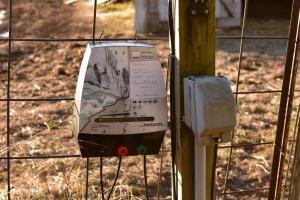Ultimate Guide to Building an Electric Fence: Step-by-Step Instructions

-
Quick Links:
- Introduction
- Understanding Electric Fences
- Benefits of Electric Fences
- Planning Your Electric Fence
- Materials and Tools Needed
- Step-by-Step Guide to Building an Electric Fence
- Safety Considerations
- Maintenance Tips
- Case Studies
- Expert Insights
- FAQs
Introduction
Electric fences have become a popular choice for both residential and agricultural applications. They are effective, cost-efficient, and relatively easy to install. This comprehensive guide aims to provide you with all the necessary information on how to make an electric fence, ensuring that you can protect your property or livestock effectively.
Understanding Electric Fences
Electric fences consist of a series of wires that carry a low-voltage electrical charge. The primary purpose is to deter animals or trespassers while providing a safe and humane way to keep boundaries. Understanding how electric fences work is crucial in the installation process.
How Electric Fences Work
Electric fences deliver a brief shock to any animal or person that touches the wire. This shock is not lethal but is enough to deter animals from crossing the boundary. The system includes a power source, insulated fencing, grounding rods, and a controller.
Benefits of Electric Fences
- Cost-Effective: Electric fences are less expensive to install compared to traditional fencing methods.
- Versatile: Suitable for various applications including livestock management and garden protection.
- Easy Installation: Requires minimal tools and can often be a DIY project.
- Deterrent Effect: Effective against various animals and can prevent theft.
- Low Maintenance: Requires less upkeep compared to other fencing types.
Planning Your Electric Fence
Before diving into the installation process, proper planning is essential. Consider the following factors:
- Purpose: Define what you need the electric fence for—livestock, garden, or property boundary.
- Layout: Sketch a layout of the area to determine where the fence will be installed.
- Local Regulations: Check local laws regarding electric fencing.
Materials and Tools Needed
Gathering the right materials and tools is vital for a successful installation. Here's a list of what you'll need:
- Materials:
- Electric fence wire (high tensile or polywire)
- Insulators
- Fence posts (wood or metal)
- Gate handles
- Grounding rods
- Electric fence energizer
- Tools:
- Wire cutters
- Pliers
- Drill
- Measuring tape
- Post driver or hammer
Step-by-Step Guide to Building an Electric Fence
Follow these detailed steps to construct your electric fence:
- Step 1: Survey the Area
Measure the perimeter where you want the fence. Note any obstacles that may affect the layout.
- Step 2: Install Fence Posts
Space your fence posts according to the type of fencing you are installing. Generally, posts should be spaced 10-12 feet apart.
- Step 3: Attach Insulators
Attach insulators to each post to prevent the electric wire from touching the post.
- Step 4: Run the Electric Wire
String the electric wire through the insulators. Ensure it is taut and at the desired height.
- Step 5: Install the Energizer
Connect the energizer to the electric wire and plug it into a power source. Ensure proper grounding by installing grounding rods into the soil.
- Step 6: Test the Fence
Use a fence tester to make sure the electric current is functioning properly.
- Step 7: Secure Gates
Install gate handles that allow you to open and close the fence without breaking the circuit.
Safety Considerations
While electric fences are generally safe, it’s essential to consider the following:
- Keep children and pets away from the fence area.
- Use a properly rated energizer to avoid shock hazards.
- Regularly inspect the fence for any damage or wear.
Maintenance Tips
- Regularly check the integrity of the wire and posts.
- Ensure that insulators are intact and not damaged.
- Test the electric current periodically to ensure efficiency.
Case Studies
Electric fences have proven effective in many scenarios:
- Farm Protection: A farmer in Ohio installed an electric fence to protect his crops from deer. He reported a 90% decrease in crop damage within the first month.
- Livestock Management: A rancher in Texas utilized an electric fence to manage grazing. This led to improved pasture health and more efficient use of land.
Expert Insights
Experts recommend assessing the specific needs of your property before choosing an electric fence system. Factors like terrain, types of animals, and purpose will influence the best setup.
FAQs
- What is the best type of electric fence for livestock?
High-tensile wire is often recommended for its durability and effectiveness.
- How much does it cost to install an electric fence?
Costs can vary widely based on materials and size, but a basic setup can range from $300 to $1,000.
- Is an electric fence safe for pets?
Yes, electric fences are safe for pets if installed correctly, but supervision is advised.
- How do I know if my electric fence is working?
Use a fence tester to check the voltage and ensure the system is functioning properly.
- Can I install an electric fence myself?
Yes, many people successfully install electric fences themselves with the right tools and guidance.
- What happens if it rains?
Electric fences are designed to work in various weather conditions, but heavy rain can affect the grounding.
- Can I use barbed wire with an electric fence?
Yes, but ensure proper insulation to prevent short circuits.
- How often should I maintain my electric fence?
Regular checks every few months are recommended, especially after storms or heavy winds.
- What is the best energizer for my fence?
The best energizer depends on the length of the fence and the type of animals being contained.
- Do I need a permit to install an electric fence?
Check local regulations, as permit requirements vary by location.
Random Reads